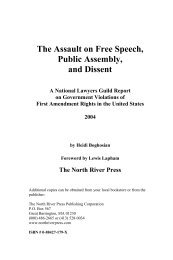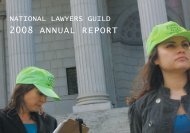Does your library have National Lawyers Guild Review?
Does your library have National Lawyers Guild Review?
Does your library have National Lawyers Guild Review?
Create successful ePaper yourself
Turn your PDF publications into a flip-book with our unique Google optimized e-Paper software.
120 national lawyers guild reviewto do more than post a notice or submit to a rerun election for threateningworkers’ jobs. Unions should not <strong>have</strong> to wait for the Board to rediscoverthe basic purposes it was created to enforce.But the fact is that the Board has lost its ability to compel employers torespect the law, based on the minimal remedies and long delays that workerscan expect when they turn to the NLRB. While labor law reform couldchange those calculations by eliminating the opportunities for delay andintimidation that employers <strong>have</strong> become experts at exploiting, we mustrelearn the methods that unions used to organize without relying on theBoard—building alliances within the communities where our members live,using economic action when it will do the most good and taking the fight toemployers wherever they are vulnerable. There is, of course, no cookbookfor what works and what doesn’t—and those topics are for another, muchlonger paper.___________________NOTES1. Of the hundreds of histories of this era, Irving Bernstein’s The Turbulent Yearsoffers perhaps the most accessible account of not only the general strikes in Toledo,Minneapolis and San Francisco in 1934, but also the hundreds of smaller battlesin other industries that helped bring about the passage of the Wagner Act. IrvingBernstein, The Turbulent Years: A History of the American Worker,1933-1941 (1970).2. As Representative Connery of Massachusetts, Chair of the House Labor Committeeand a sponsor of the House version of the bill that eventually became the WagnerAct, said on the floor of the House:Mr. Speaker, a labor man in whom I <strong>have</strong> the greatest confidence said to me2 days ago, “You <strong>have</strong> seen Toledo, Minneapolis, and San Francisco. That ismild. You <strong>have</strong> not yet seen the gates of hell opened, and that is what is goingto happen from now on unless the Congress of the United States passes laborlegislation to cure the evils which are existing in industry and which are drivingthese workers to desperation.78 Cong. Rec. 9888 (May 29, 1934).3. Professor Michael Gottesman, looking back a third of a century later, describedthat time as “the halcyon days, [when] [u]nion density was near its all-time high,[and] [t]he Steelworkers Trilogy had just been decided, in which the SupremeCourt waxed romantic about collective bargaining and labor arbitration. . . . Ithought the <strong>National</strong> Labor Relations Act . . . , and the system of collective bargainingit established and fostered, an unqualified triumph.” Michael Gottesman,In Despair, Starting Over: Imagining a Labor Law for Unorganized Workers,69 Chi.-Kent L. Rev. 59 (1993). The Hon. Joseph Grodin, former Justice of theCalifornia Supreme Court, similarly recalls how he expected, when he beganrepresenting unions more than fifty years ago, that the percentage of private sectorunion members would double, not decline, in the decades to follow. Joseph



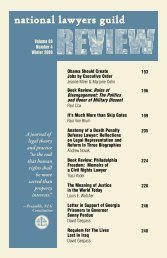
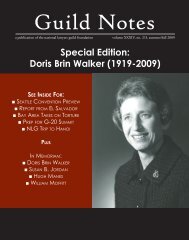
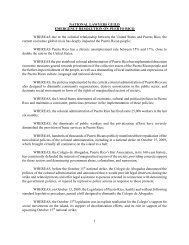
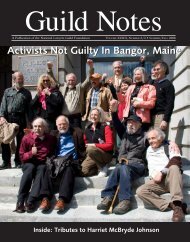
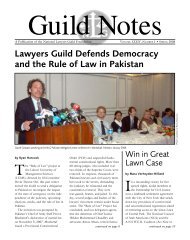
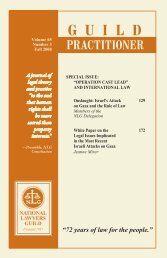

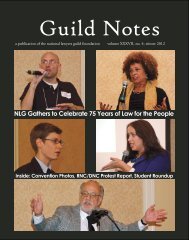

![NLGRev 68-2[1].indd - National Lawyers Guild](https://img.yumpu.com/30820772/1/167x260/nlgrev-68-21indd-national-lawyers-guild.jpg?quality=85)
